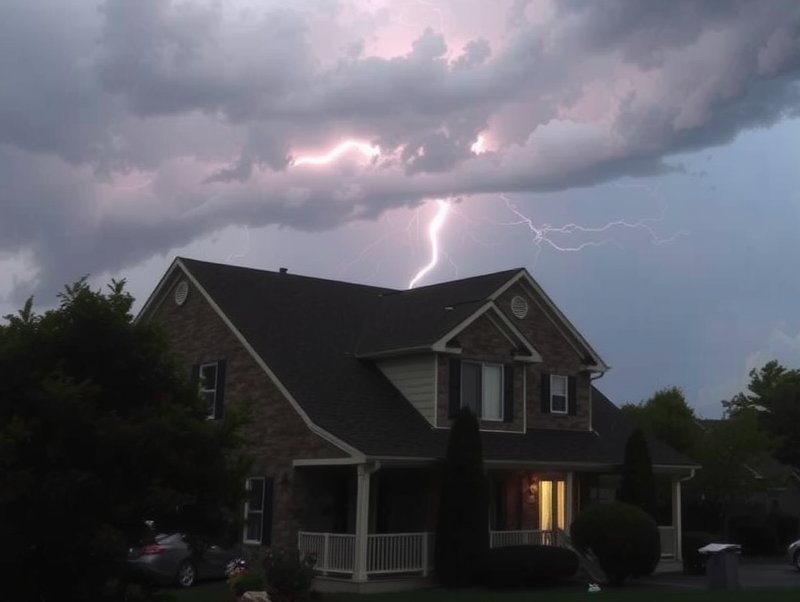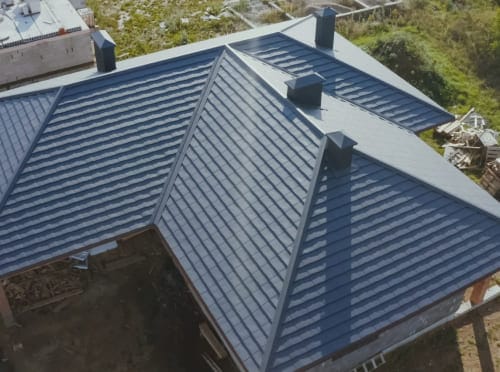After a severe storm rolls through, it’s natural to worry about your home’s well-being. Your roof is your first line of defense against wind, rain, hail, and snow, yet it absorbs the worst of nature’s wrath.
When your roof is compromised, water and debris can sneak into your living space. Small issues can quickly escalate into major repairs, risking higher insurance deductibles and unexpected costs. A post-storm inspection can save you thousands in future repairs and extend your roof’s life by years.
This article walks you through practical steps to spot storm damage on your roof. By understanding what to look for, you can schedule timely repairs, protect your investment, and keep your family comfortable and dry.
Inspecting Your Shingles
Begin with a ground-level inspection using a quality pair of binoculars. On your roof, focus on shingles. Look for cracked, broken, or missing pieces, and note any curling or lifted edges.
Curling indicates weakened granule adhesion—often a result of wind uplift—while hailstorms leave distinct pockmarks that compromise the integrity of a shingle. Examine shingles for streaks of black or green, which often signal algae or moss growth after prolonged moisture.
If you’re unsure about what you see, mark the area and revisit after a day or two to note any changes. When multiple shingles look compromised, resist the urge to walk on a steep roof; leave the rest to professionals.
Checking for Granule Loss
After examining shingles, clear your gutters and downspouts of leaves and debris. Then, inspect the bottom of each gutter for spent granules—tiny mineral stones that coat shingles to reflect UV rays and protect the asphalt layer. Storm-driven rain accelerates granule loss, washing more of these protective stones downward.
Roof pitch affects how quickly granules shed; steeper slopes tend to lose more under heavy downpours. Be aware that light-colored shingles may hide granule loss under diffused light, so inspect carefully under bright sunlight. Significant granule buildup in gutters signals bald spots on shingles, which quickens aging and leak risk.
Inspecting Flashings, Vents, and Chimneys
Flashings, vents, and chimney seals are the roof’s most vulnerable points. These metal strips and caps seal joints and roof penetrations against water ingress. Storm winds can loosen or lift flashing edges, while hail and flying debris dent vent caps and crack chimney crowns.
From the ground, use binoculars to spot gaps, bent edges, or missing sealant around chimneys and pipes. Look for a torn or lifted roofing membrane under the flashing.
Don’t overlook plumbing vent seals; a small gap there can cause significant leaks that go unnoticed until interior damage appears.
Examining Gutters and Fascia
Gutters channel water away from your home’s foundation, but they can suffer damage during storms. Debris-laden gutters may sag under weight, pulling away from the fascia board. After cleaning, look for twisted or bent sections and inspect hanger brackets for looseness.
Examine the fascia board itself for rot, cracking, or peeling paint where it meets the gutter. Ensure gutter hangers are secure; loose hangers can cause entire sections to detach under load, funneling water directly against the siding or foundation.
Checking for Interior Signs
Not all storm damage appears on the exterior. On a dry day, head into your attic with a flashlight. Look for daylight peeking through roof boards—a sure sign of holes or missing shingles.
Examine insulation and ceiling joists for water stains, mold, or damp, heavy insulation. Below attic spaces, inspect ceilings in each room for brown or yellow staining, bubbling paint, or warped drywall.
Watch for musty odors, which often accompany hidden water intrusion that could threaten structural wood and electrical wiring.
Taking Photographs and Notes
Before you attempt any repairs or call a contractor, document every sign of damage. Use your smartphone to capture wide-angle shots of the entire roof and detailed close-ups of each affected area. Label each photo with the date, storm name or date, and specific roof section.
Create a simple damage log listing each issue’s location, size, and photo reference. Clear documentation helps insurance adjusters understand the full scope and helps contractors prepare precise repair estimates.
Making Temporary Repairs and Safety Measures
If you discover minor leaks or loose shingles, temporary fixes can prevent further damage until professionals arrive. Roofing tape and self-adhesive patches work well on small holes, while lightweight tarps give short-term protection over larger areas.
Secure the tarps by tucking edges under intact shingles and anchoring with bungee cords rather than nails, which create new leak points.
When making minor repairs on your roof, always prioritize safety: wear slip-resistant shoes, use a stable ladder or scaffolding, and consider a safety harness when working at heights.
When to Call JP Carroll Roofing
While DIY efforts can address minor issues, serious storm damage requires professional expertise. If you observe multiple missing shingles, extensive granule loss, bent or lifted flashings, sagging gutters, or interior water stains, it’s time to call JP Carroll Roofing.
Our licensed experts conduct comprehensive storm damage inspections, provide detailed condition reports, and handle insurance paperwork to streamline your claim.
Preventive Maintenance After Repairs
Once repairs are finished, establish a proactive maintenance schedule to protect your investment. Inspect your roof at least twice a year—in spring and fall—and immediately after major storms. Trim overhanging branches to reduce debris impact and shade that fosters moss growth.
Keep gutters clear and ensure downspouts direct water at least 5 feet from the foundation. Check attic ventilation to prevent moisture buildup and ice dams. Good roof ventilation reduces attic heat, lowering energy bills and preventing shingle damage.
Lastly, consider annual maintenance services with JP Carroll Roofing: We reseal flashings, replace worn shingles, and apply protective roof coatings to extend lifespan.
Ensure Your Roof Can Weather Any Storm
Storms are unpredictable, but your response doesn’t have to be. By inspecting shingles, granule loss, flashings, gutters, and interiors and documenting any findings, you can catch storm damage early and avoid costly repairs.
What steps will you take to ensure your roof stays storm-ready? For professional storm damage inspections, comprehensive repair solutions, and ongoing maintenance, contact JP Carroll Roofing today. Let our dedicated team protect your home so you can rest easy, knowing you’re covered.


